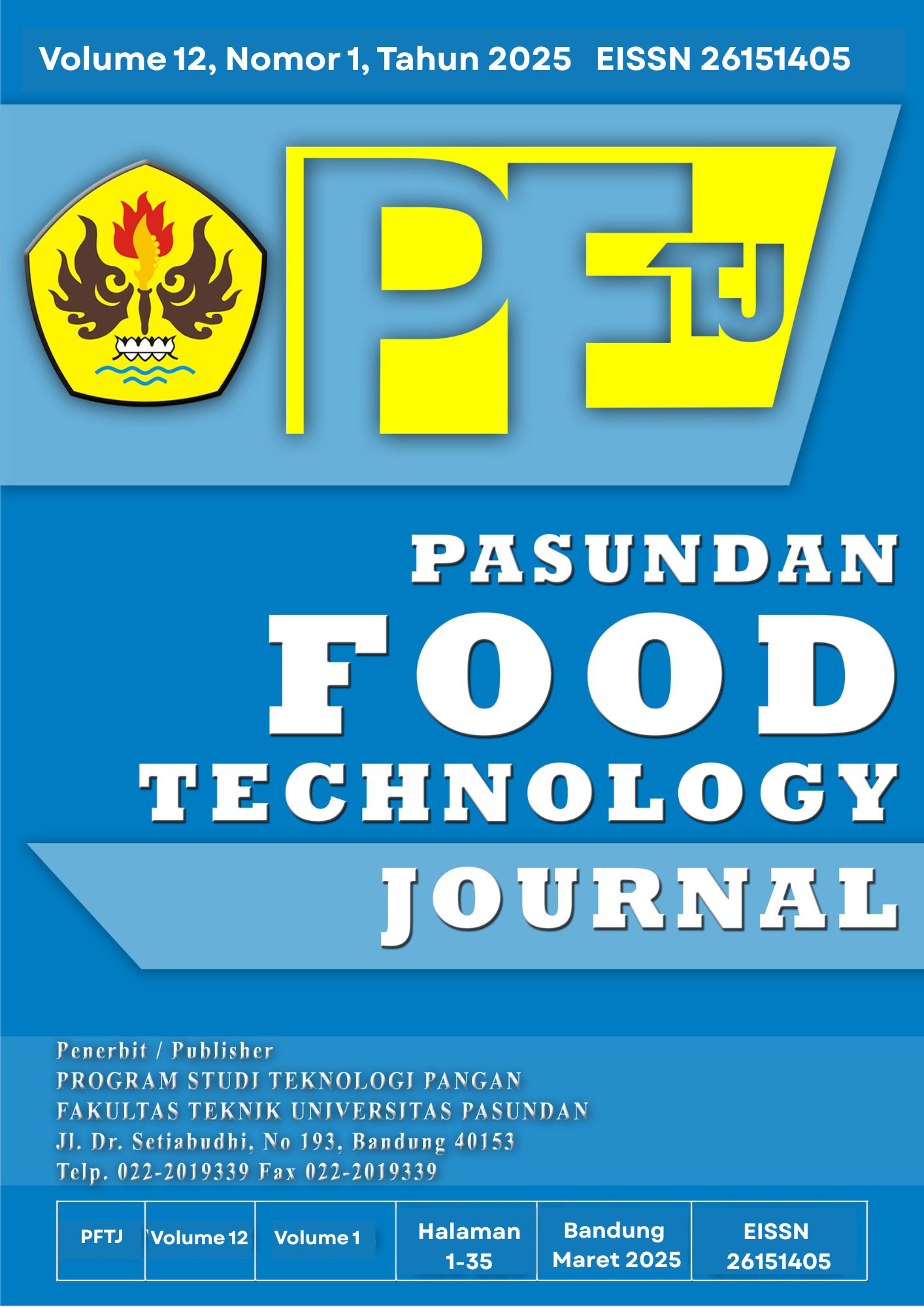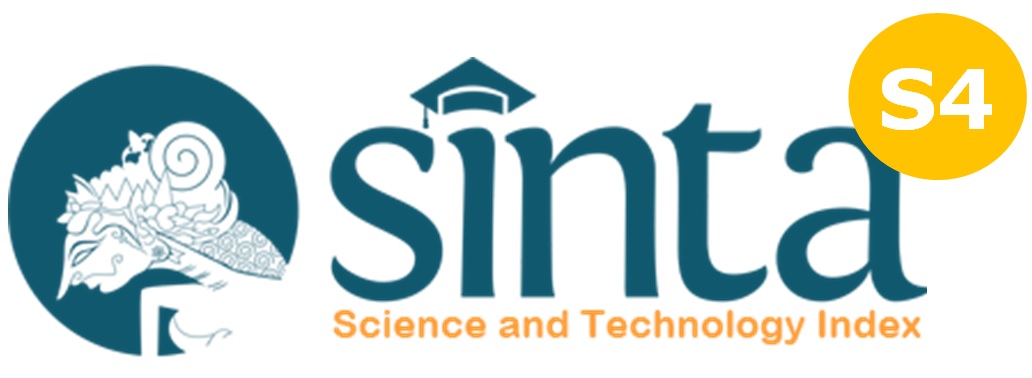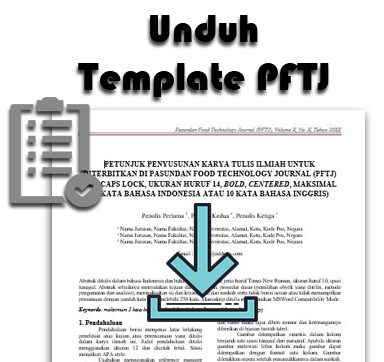ORGANOLEPTIC TEST OF EUTABEN OF EOMUK PRODUCTS BASED ON BENENG TARO (XANTHOSOMA UNDIPES)
DOI:
https://doi.org/10.23969/pftj.v12i1.22306Keywords:
Eomuk, talas beneng, uji hedonikAbstract
Food diversification can be applied using local foods such as tubers like Talas Beneng. Talas Beneng is one of the local foods with a fairly high protein content. Talas Beneng which is processed into semi-finished products in the form of flour can be used as an alternative substitute for wheat flour. One of the utilization of beneng taro flour is by making EuTaBen products by substituting talas beneng flour in eomuk to create sustainable food. The purpose of this study was to determine the sensory acceptance of talas beneng eomuk, to determine the nutritional content that contributes most to talas beneng eomuk, and to determine the most preferred ingredient composition of talas beneng eomuk. The method used is the experimental method by making 3 formulas. Formula 1 (using 300g mackerel and 45g talas beneng flour), formula 2 (using 300g mackerel and 45g talas beneng flour), and formula 3 (using 300g mackerel, 45g talas beneng flour, 15g tapioca flour). The instrument used was a questionnaire which was analyzed by organoleptic test through hedonic test involving 30 panelists. The test results were analyzed using the Kruskall-Wallis non-parametric test and the Mann-Whitney follow-up test with a 95% confidence level (α=0.05). The results showed that the Eomuk Talas Beneng product using 300g mackerel and 30g talas beneng flour with the addition of tapioca flour was better than the other products.
Downloads



















